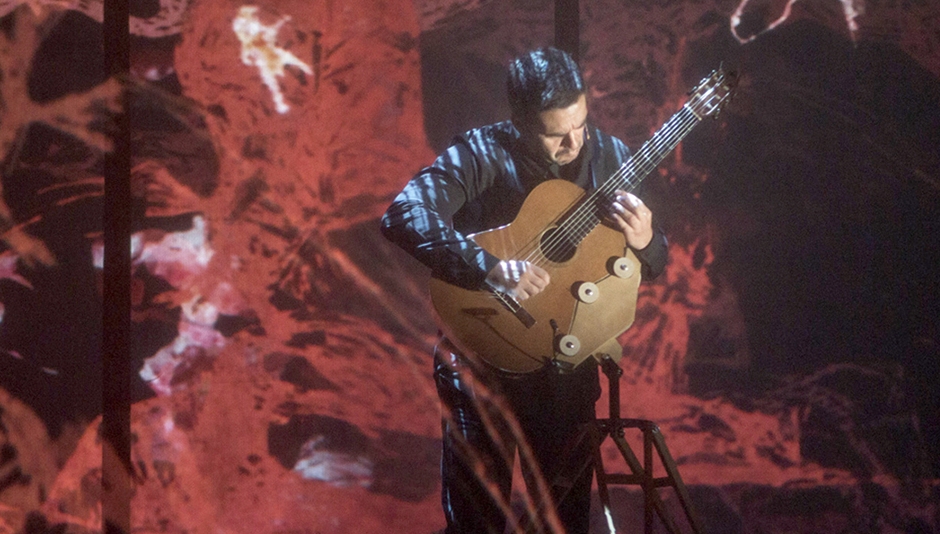“For me, Masquerade was incredibly important because when I was given it I was stuck in an oncology ward,” she says. “This was before the time of children’s hospitals and Captain Starlight and fish tanks and clowns. It was stark. It was white and it was just boring. There was nothing to do. Just nothing.” As a toddler, Mulvany had been diagnosed with a Wilms’ tumour, a cancerous growth in the kidney, and much of her childhood was spent in and out of the PrincessMargaretHospital for cancer-related treatments. Broken bones being one of them.
“I had a broken arm because the radiotherapy had weakened my bones. So, my arm was in traction and I was literally stuck in bed for three months. I was trapped in bed, but I never felt that way after I got the book,” confesses Mulvany fondly. Instead of starkly white reality, Jack’s celestial journey exploded the young girl’s imagination – convincing Mulvany that she would be the one to discover the amulet once she left the hospital.
“Of course that didn’t happen,” she laughs. The amulet was excavated under dubious circumstances in 1982, but Masquerade inspired a legacy genre: armchair treasure hunts. Something artist and author Graeme Base became famous for. “[Masquerade] was just enough to assist me to get better. Imagination is all when you’re in a situation like that [and] I still live by that. It’s the greatest gift I’ve ever been given as a human being with an ability to explore my imagination.”
Mulvany recently adapted Williams’ book into a musical production that features contributions from Artistic Director Lee Lewis (Rupert, The Bleeding Tree), Helpmann award-winner Helen Dallimore, and visionary Anna Cordingley, who earned a Helpmann nomination for Best Costume Design in Masquerade. “The costumes are really extravagant,” enthuses Mulvany, who explained that character Penny Pockets’ skirt has 150 pockets full of stuff; a true execution of sewing mastery.
Masquerade is produced by Sydney’s award-winning Griffin Theatre Company and the State Theatre Company of South Australia, and extends upon Williams’ original story, interweaving it with the narrative of a mother reading the book to her son Joe, who has cancer. Though it holds semblances to William Goldman’s The Princess Bride, where a grandfather reads the novel to a bedridden boy, the play goes beyond the book, with the second act seeing the mother, Tessa (named after the person who gave Mulvany Masquerade), take Joe on a quest to discover the amulet.
“That final line [in the book], ‘The Sun set and the day was over’, becomes the crux of the play because of how disappointing the ending is. It’s so devastating because you ask so many questions: Did the Sun get to find out he was loved? Does he still think he’s ugly? Does the Moon keep trying to get to him [to tell him she loves him]? What happened to Jack Hare? It’s completely unfinished,” laments Mulvany, clearly passionate about the text. “It was so disappointing of an ending [that] it was my springboard into the play – that Tessa, at the end of the first act goes: ‘Bugger that for an ending, that’s shit. We’re going to go find the jewel ourselves’ and takes Joe out of the hospital. Even though books don’t always end the way you’d like to, you can change them, for your own method of madness. It’s all about the ‘What if?’”
This disregard towards canonical endings and questioning of ‘what if?’ is a form of creativity itself. It’s a commonality within fan fiction, which sees people take characters they adore and transplant them in contexts or alternate timelines they wish existed. Whether this is Doctor Who screenwriters Steven Moffat and Mark Gatiss’ series Sherlock, which places the Victorian sleuth in the 21st century, or practically every Disney fairy tale adaption, these narratives are vessels for the creativity and expression of imagination.
“I said to Kit [Williams], ‘How much do you want us to incorporate those original images into the play?’ and he said: ‘None at all’,” recalls Mulvany. “He said, ‘You can take elements, sure, but I’d prefer if you got a designer on board who could play [around] and make it their own.’ So that’s what we did [and] he really loved it. The entire way he’s been in contact with me and has had approval of the drafts, and even one day suggested a new scene and wrote a little dialogue for [it] – which was another gem because no one has had any writing from Kit in decades now – Melbourne will get to see that, which is pretty extraordinary.”
BY AVRILLE BYLOK-COLLARD

